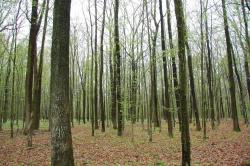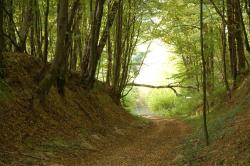 Asset Publisher
Asset Publisher
The State Forests National Forest Holding
The State Forests National Forest Holding is the largest organisation in the European Union managing forests, which belong to the State Treasury and celebrating its 90 anniversary this year.
Presently, we manage the area of one third of Poland's territory. Not long after the end of the Second World War, there was only 21 % of the area. Every year we plant 500 million of new trees, as we want Polish forests grow all the time.
Every year Polish foresters plant 500 million of trees.
85 % of nature reserves in Poland are located within the State Forests. 40 % of the forests managed by General Directorate of the State Forests are protected within the framework of European network Natura 2000. We fight against many threats: natural disasters, plaques of insects, trees' diseases, fires, pollutions, as well as poaching and vandalism.
We take care the forestry supplying the market with timber, as ecological and universal material, to be carried on in accordance with rules of balanced development (photography P.Fabjański).
One of our major tasks is making forests accessible to the society. We invite you to take advantage of these beautifully located within the forest wilderness holiday resorts, forester's lodges or guest rooms. That is for you, we create thousand kilometres of hiking trails, cycling paths or camping sites. All the above mentioned, you can find in service www.czaswlas.pl.
We also take care the forestry supplying the market with timber, as ecological and universal material, to be carried on in accordance with rules of balanced development. We obtain over 30 million of cubic meters of wood annually, twice as much as at the beginning of the nineties of the XX century.
Despite of this, the average of wood abundance per hectare of our forests is one fourth bigger than 20 years ago and 40% bigger than the average of European Union currently amounts.
In Poland in sectors connected with the forestry, there work about 375 thousand of people. It means that each 40 working Pole works in the forest.
In Poland in sectors connected with the forestry, there work about 375 thousand of people. It means that each 40 working Pole works in the forest. The sector of wood processing works out approximately 8 % of our GDP (Gross Domestic Product). Among others, thanks to the timber from the State Forests Poland is the 10 largest producer of furniture in the world, and the 4 largest furniture exporter.
The State Forests employ 25 thousand people. That way we are the 9 biggest employer in Poland. Among the largest companies in our country it takes 22 place in respect of its incomes and 11 place in respect of its profits. The value of assets, we manage, reaches 300 million zl. If we add social values, it will be worth one billion zlotych. We do not use money from the budget, but we earn money on our own to support the business. In spite of the financial crisis, since 2002, we continuously note down profits. Moreover, we pay taxes amounting 1,3 billion zl annually.
87 % of Poles think, the foresters are competent. We willingly share our knowledge of Polish forests, of their history and of nature values with the others. We publish books, periodicals, brochures; we also administer the website www.lasy.gov.pl . For children, the youth and teachers, we prepared internet service "E-lynx' Lynx Forest" (www.erys.pl). Our staff has supported schools in field of nature education for years. We also organise many actions to let people broaden their knowledge about forest, nature and ecology.
 Asset Publisher
Asset Publisher
 Asset Publisher
Asset Publisher
Położenie
Położenie
Nadleśnictwo Mircze znajduje się na terenie Regionalnej Dyrekcji Lasów Państwowych w Lublinie. Zasięg terytorialny nadleśnictwa wynosi 98 324 ha.
Na tej powierzchni jest wg stanu na 1.01.2019 r. 10 615 ha lasów z tego 87,1 % Lasów Państwowych oraz 12,9% lasów innych własności. Wprowadzenie programów zalesiania gruntów zbędnych i nieprzydatnych do produkcji rolnej powoduje, że powierzchnia lasów prywatnych powoli, ale systematycznie w ostatnich latach ulega powiększeniu. Lasy Nadleśnictwa Mircze są bardzo rozproszone i tworzą ok. 150 kompleksów. Największy kompleks zwartego lasu – Lasy Dołhobyczowskie zajmują 1 729 ha (1 420 ha Leśnictwo Dołhobyczów oraz 309 ha lasy niepaństwowe). Pod względem administracyjnym Nadleśnictwo Mircze położone jest w obrębie dwóch powiatów województwa lubelskiego: Hrubieszów oraz Tomaszów Lubelski.
Pod względem regionalizacji przyrodniczo-leśnej tereny te leżą w Krainie Małopolskiej, w mezoregionach Zamojsko-Hrubieszowskim i Wyżyny Zachodnio-Wołyńskiej (Zielony R. Kliczkowska A. Regionalizacjia przyrodniczo-leśna Polski 2010). Tutejsze gleby należą w przeważającej części do działu gleb autogenicznych i rzędów: gleby brunatnoziemne i czarnoziemne. Powstały one w warunkach klimatu kontynentalnego i umiarkowanego suchego przy udziale roślinności łąkowo-stepowej i leśno-stepowej. Na tutejszym obszarze przeważa wpływ klimatu kontynentalnego, który charakteryzuje się bardzo upalnym latem oraz mroźną i śnieżną zimą. Występują tu również długie okresy upalne i bezdeszczowe. Jednak ze względu na bardzo dużą pojemność sorpcyjną i retencyjną tutejszych gleb okresy susz fizjologicznych są bardzo rzadkie i nie mają one większego znaczenia. Dlatego też głównym typem siedliskowym jest las świeży, który stanowi 63,3% powierzchni leśnej (Siedliskowy typ lasu TSL – podstawowa jednostka klasyfikacji siedlisk leśnych, gdzie głównymi elementami różnicującymi są żyzność i wilgotność gleby). Głównym gatunkiem lasotwórczym tutejszych lasów jest dąb szypułkowy, który występuje na 50,04% powierzchni, w dalszej kolejności występują: sosna pospolita 14,34%, brzoza (głównie brodawkowata) 13,48%, grab pospolity 11,92%, jesion wyniosły 0,26%, pozostałe 9,96% zajmują: klon jawor, klon zwyczajny, osika, czereśnia ptasia, modrzew europejski, buk zwyczajny i topole.


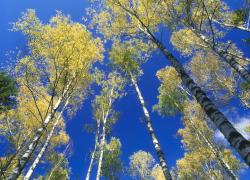 fot. Paweł Fabijański
fot. Paweł Fabijański
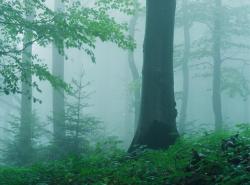 fot. Paweł Fabijański
fot. Paweł Fabijański
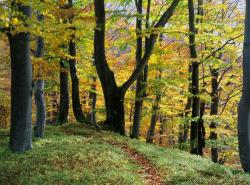 fot. Paweł Fabijański
fot. Paweł Fabijański


